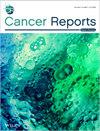Correlation Between Pathological and MRI Radiological Tumor Responses to Neoadjuvant Chemotherapy in Non-Luminal Breast Cancer: A Single Institution Experience
Abstract
Background
Neoadjuvant chemotherapy (NACT) is the standard treatment for patients with locally advanced breast cancer. In recent years, it has also been used for early-stage triple-negative breast cancer (TNBC) and human epidermal growth factor receptor 2-positive (HER2+) breast cancers.
Objectives
Our hypothesis asserts a correlation between breast radiological and pathological response post-NACT in non-luminal breast cancer patients. We also aimed to determine the predictive value of MRI in predicting response in these patients. Radiologist agreement upon radiological MRI response is also highlighted in the current study.
Methods
A retrospective study to evaluate MRI's accuracy for assessing tumor response to NACT in early and locally advanced non-metastatic breast cancer patients in comparison with pathological assessments. We enrolled cases that were treated with neoadjuvant chemotherapy between December 2019 and November 2023.
Results
Dynamic MRI's sensitivity to detect tumor response is 86.4%, its specificity is 96.8%, and its accuracy is 92.4%, with a significant p-value. So, the high correlation between measurements of residual disease detected by MRI and those detected by pathological assessment supports the use of MRI for imaging assessment during NACT. The two radiologists involved in our study were in good agreement in their assessment of radiological response (Kappa: 0.801, sensitivity: 85.7%, specificity: 93.8%, and accuracy: 90.6%).
Conclusions
The accuracy of imaging assessment by breast MRI during NACT is validated by the greater correlation between measurements of residual disease on MRI and pathology, establishing its role as the most precise imaging modality. We strongly advocate for the dependable role of MRI in monitoring breast lesions during neoadjuvant therapy, especially in non-luminal breast cancer cases, regardless of whether they present as mass or non-mass enhancement patterns.


 求助内容:
求助内容: 应助结果提醒方式:
应助结果提醒方式:


